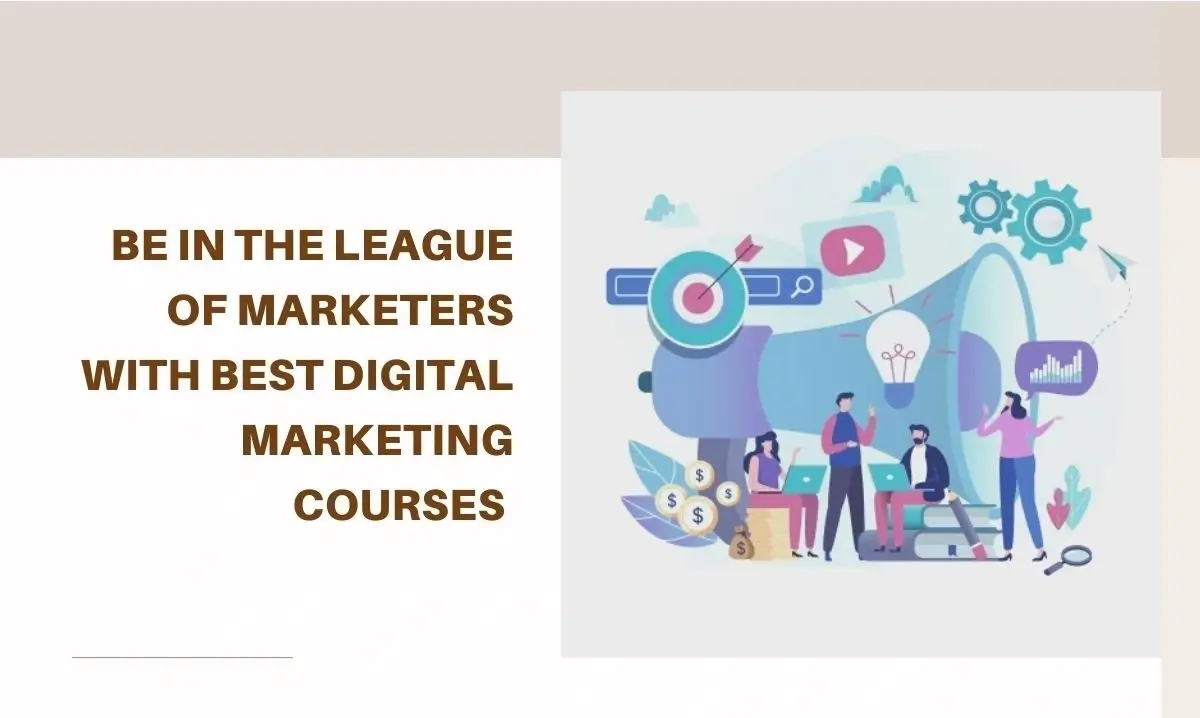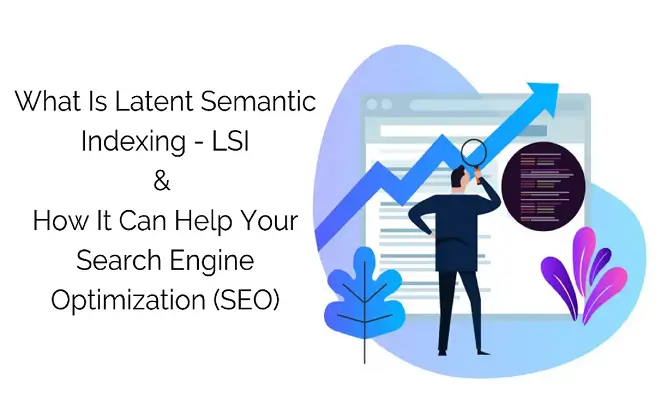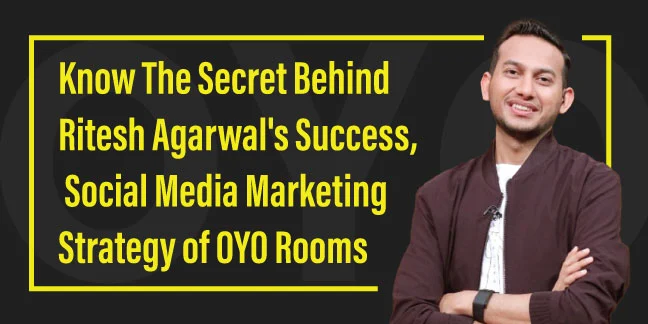
OYO brings a revolution to the hotel industry in India! It started with a small start-up, and now it is the third-largest hospitality chain by room count. But what is the secret behind this huge success? It’s not only the credit of its visionary founder but also to OYO’s Social Media Marketing Strategy that plays an important role in this journey.
OYO has come out as a pioneer, transforming the way people perceive and experience budget accommodation. With its innovative approach and commitment to customer satisfaction, OYO has become a giant in the hotel industry.
Table of Contents
-
- How did it start?
- Why was Oravel Stays renamed OYO?
- Business Objectives Of OYO:
- Marketing Strategy of OYO Rooms:
- How does OYO use different social media platforms for branding?
- Social Media Marketing Strategy of OYO:
- Hashtag Strategy of OYO:
- Ad Strategy of OYO:
- Audience Targeting Strategy of OYO:
- The Future of OYO’s Social Media Marketing Strategy:
- Competitors of OYO Room:
- Conclusion
How did it start?
In 2012 a 17-year-old college dropout boy launched a hotel listing website named Oravel Stays. He wanted to change the Indian Hospitality Business with the help of technology. After launching this website the boy received $100,000 as part of the Thiel Fellowship, a two-year program from PayPal co-founder Peter Thiel. In 2013 this website was renamed OYO and the 17-year-old college dropout boy is none other than the founder and CEO of OYO Rooms Ritesh Agarwal.
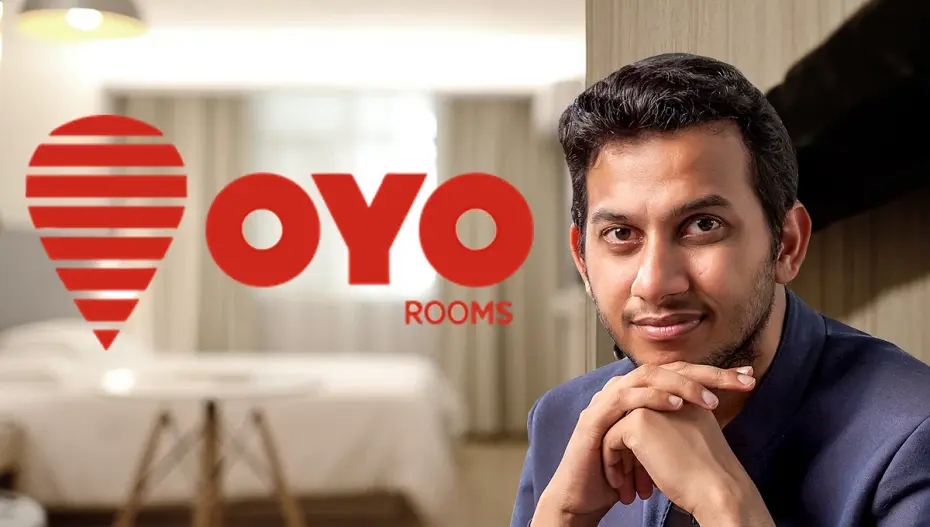
Why was Oravel Stays renamed OYO?
In the year 2013, Ritesh realized that dinner and bed were not a piece of sufficient information for a consumer. Because Oravel Stays only provides budget and premium accommodation. So he proposed to make it an affordable and standardized accommodation. On that time Oravel Stays renamed as OYO Rooms (On Your Own).
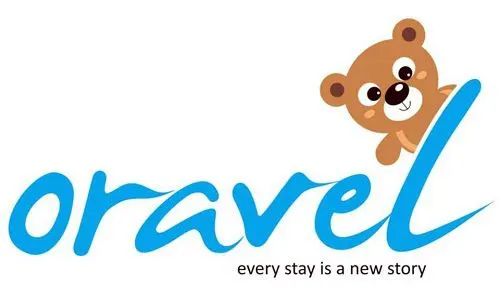
In 2016, OYO Rooms expanded its business globally. After India their first hotel was in Malaysia then they spread into Nepal and Bhutan.
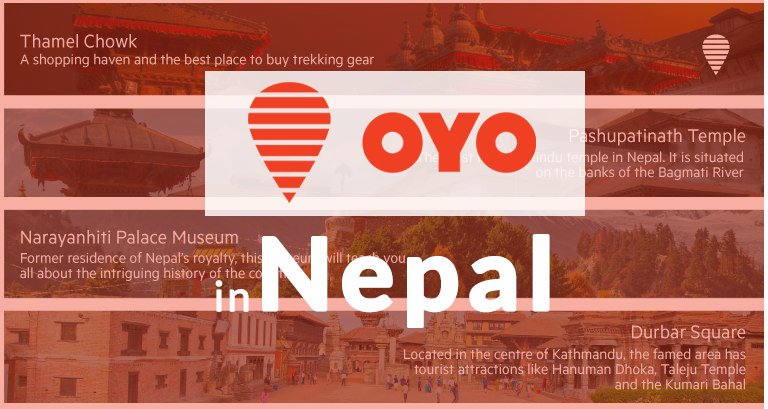
In late 2017, OYO launched a new service called OYO Home, a marketplace for managed short-term rentals similar to Airbnb. OYO Home has been delivered to over 10 holiday destinations in India, including Goa, Simla, Puducherry, and Kerala!
In 2018, OYO started its operations in the UK, UAE, China, Singapore, and Indonesia making it one of the most successful businesses.
In April 2019, Oyo launched its first-ever Oyo Home in Dubai.
As you can see Ritesh Agarwal started with a single hotel in Gurgaon, India. His innovative business model involved renovating budget hotels and standardizing ambiance to ensure a consistent and comfortable experience for guests. Now OYO Rooms is India’s largest hotel chain network. It has more than 43,000 properties and 1 million rooms across 800 cities in 80 countries.
Business Objectives Of OYO:
- Global Presence: OYO’s primary goal is to establish a global presence by expanding its operations to various countries and regions.
- Customer Satisfaction: Customer satisfaction is another important goal of OYO.
- Market Leadership: OYO aims to establish itself as a market leader in the hospitality sector.
- Responsible Travel: OYO increasingly focuses on integrating sustainable practices and promoting responsible travel.
- Employee Development and Well-being: OYO prioritizes the development and well-being of its employees.
Marketing Strategy of OYO Rooms:
OYO prefers to promote its brands through social media like Facebook, Instagram, Twitter, LinkedIn, etc. Also, OYO focuses on 360-degree digital marketing strategies. It used Google search ads, and multiple social media campaigns to promote its app and website. But OYO was not dependent only on paid campaigns, it leveraged social media and also focused on SEO to gain organic traffic to its website with the keywords with maximum search volume. They updated their website with their customer’s needs and intentions. When a person searches for a hotel it automatically redirects them.
How does OYO use different social media platforms for branding?
OYO uses multiple social media platforms for its branding. They post actively on Facebook, Instagram, and Twitter.
- Facebook: OYO shared location-based posts to help people find their travel destination. Also, OYO shared brand progress posts that build a connection with the brand’s followers and engage them regularly with the content. With regular promotional posts, OYO provides the customer with offers, and discounts and encourages them to book hotels from OYO instead of other brands.
- Instagram: In Instagram, OYO reposts pictures taken by travelers and their users. This activity encourages followers to tag OYO on their posts and it also increases OYO’s engagement rate. Also, OYO uses Instagram as a platform for visual storytelling, providing followers with a curated and visually pleasing glimpse into its diverse accommodations.
View this post on Instagram
- Twitter: Twitter’s real-time nature makes it an ideal platform for OYO to engage in direct and timely communication with its audience. OYO uses Twitter to share instant updates, respond to customer queries, and participate in relevant trends and conversations within the travel and hospitality industry. Also, they share various award-winning moments on Twitter.
We haven’t forgotten how to accept and love each other’s differences. Sometimes all we need is a gentle reminder to #LetLoveIn pic.twitter.com/9pcdaF7OFC
— OYO (@oyorooms) February 14, 2022
Social Media Marketing Strategy of OYO:
Social media marketing has become an essential tool for businesses these days, and OYO discovered its potential early on. With popular platforms like Facebook, Instagram, Twitter, and LinkedIn, OYO started on a journey to connect with its target audience, engage customers, and build a strong brand presence.
- Customer Engagement and Feedback: One of the primary ways OYO utilized social media was by building direct communication with its customers. Through platforms like Twitter and Facebook, OYO encouraged guests to share their experiences, concerns, and suggestions. This direct engagement not only created a strong bond between the brand and its customers but also provided valuable insights that OYO used to improve its services and address issues promptly. By actively responding to customer feedback, OYO showcased a commitment to continuous improvement, building trust and loyalty among its clientele.
- Influencer Collaborations: Understanding the power of influencers in shaping consumer opinions, OYO strategically collaborated with social media influencers to showcase its properties. These collaborations were not limited to travel influencers but also included lifestyle, fashion, and entertainment personalities. By aligning with influencers who resonated with OYO’s target demographic, the brand effectively expanded its reach and created aspirational narratives around budget travel.
View this post on Instagram
- Promotions and Exclusive Deals: Through carefully crafted posts and targeted advertisements, the brand attracted users to book directly through OYO’s platforms, offering discounts, loyalty rewards, and special packages. This increased direct bookings and allowed OYO to track and analyze user behavior, refining its marketing strategies further.
- Visual Storytelling: Instagram, known for its visual-centric nature, became a crucial tool for OYO to showcase its properties. The brand invested in high-quality visual content, providing potential customers with a virtual tour of OYO’s offerings. This showcased the diverse range of accommodations but also reinforced the brand’s commitment to quality and aesthetics.
View this post on Instagram
Hashtag Strategy of OYO:
- Hashtag: #oyokarona
- Tagline: Not Your Regular Room
- Objective: Get traffic to the website
- Target Audience: Family, Married and Unmarried Couple, Traveler, Business Executive.
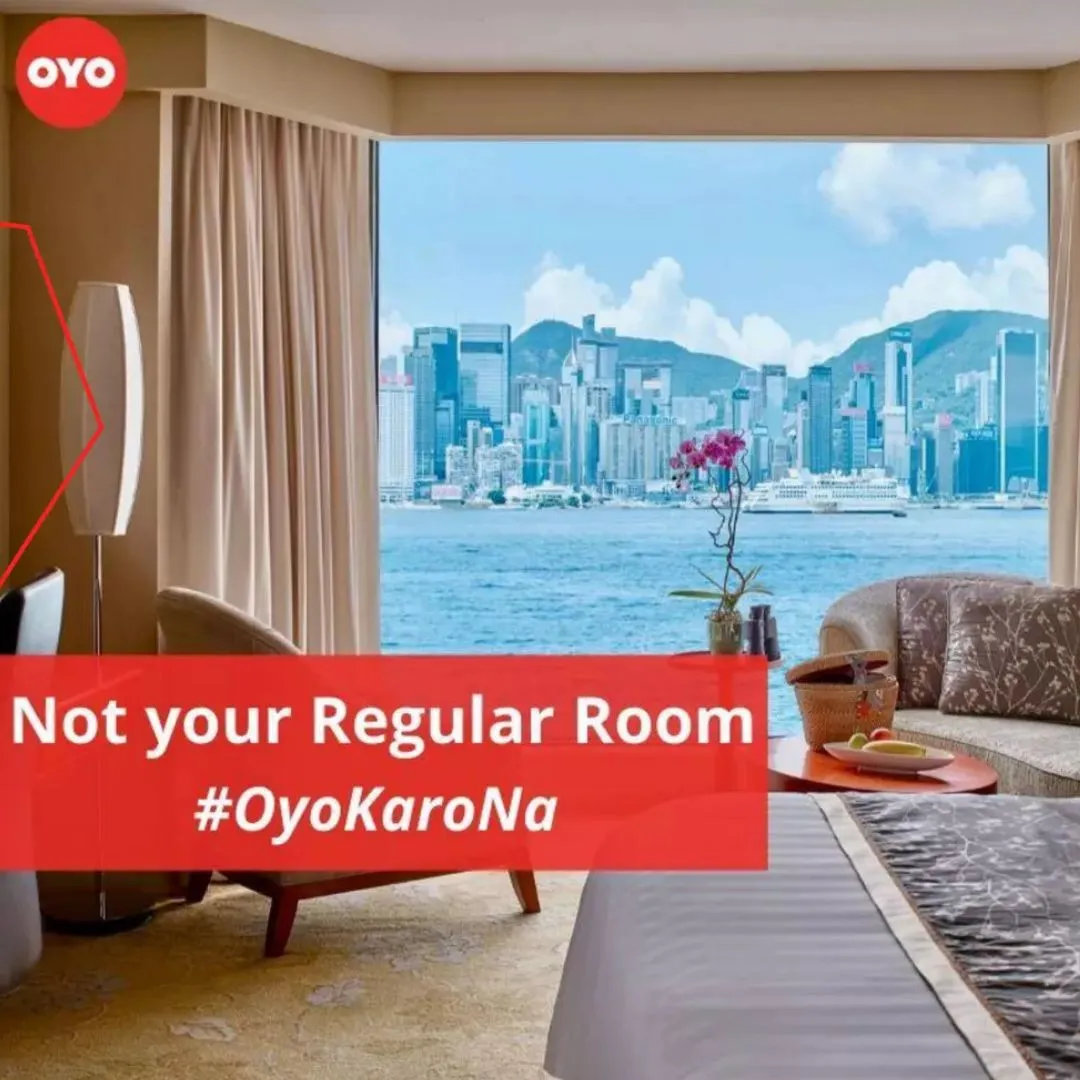
Ad Strategy of OYO:
- Campaign Objective: Show the brand message of luxury at an affordable price for all kinds of trips.
- Platform: Facebook, Instagram
- Motive: Hotel Booking
Audience Targeting Strategy of OYO:
Oyo targets both genders in the 20-30 age group. These people are usually from urban areas and belong to the low or middle-income segment of the population. Oyo targets students and professionals who enjoy hiking and short trips, often alone.
The Future of OYO’s Social Media Marketing Strategy:
As OYO continues to scale greater heights, its social media marketing strategy remains the backbone of its growth path. Looking forward, OYO is ready to use amazing technologies such as augmented reality (AR) and virtual reality (VR) to provide interactive experiences through social media. The brand also recognizes the importance of sustainability and community-driven initiatives, to use social media as a platform to increase its commitment to responsible travel.
Competitors of OYO Room:
In the competitive world of the hospitality industry, OYO faces multiple rivals, each with its unique strengths and strategies. Let’s look into a comprehensive analysis of OYO’s top competitors, including Yatra.com, Make My Trip, Airbnb, and Trivago, focusing on their founders, inception, social media marketing strategies, and revenue.
Yatra.com:
- Founder: Yatra.com was founded by Dhruv Shringi, Sabina Chopra, and Manish Amin.
- Starting Year: The company started operations in 2006.
- Services Provided By Yatra.com: Hotel Booking, Bus Tickets, Train Tickets and Flight Booking.
- Social Media Marketing Strategy: Yatra.com uses social media platforms like Facebook, Twitter, and Instagram to engage with its audience. Their strategy includes sharing travel tips, destination guides, promotional offers, and user-generated content to increase brand visibility and customer engagement.
- No. Of Followers on Facebook: 2.3M
- No. Of Followers on Instagram: 99.6K
- No. Of Followers on LinkedIn: 93K
- No. Of Followers on Twitter: 67.2K
- Revenue: As of the 2023 data Yatra.com reported annual revenue of approximately $52.78 M
Make My Trip:
- Founder: Make My Trip was founded by Deep Kalra.
- Starting Year: The company started its business in 2000.
- Services Provided By Make My Trip: Hotel Booking, Holiday Packages, Villas and homestay booking, rail, bus tickets, and flight booking. Also, you can book intercity cab services with the help of Make My Trip.
- Social Media Marketing Strategy: Make My Trip takes advantage of social media platforms such as Facebook, Twitter, and YouTube to connect with its audience. Their strategy involves sharing travel inspiration, exclusive deals, customer testimonials, and engaging with users through interactive campaigns and contests.
- No. Of Followers on Facebook: 2.5M
- No. Of Followers on Instagram: 224K
- No. Of Followers on LinkedIn: 657K
- No. Of Followers on Twitter: 131.5K
- Revenue: As of the 2023 data Make My Trip reported annual revenue of approximately $0.593B. It has increased 95.13% from 2022.
Airbnb:
- Founder: Airbnb was founded by Brian Chesky, Joe Gebbia, and Nathan Blecharczyk.
- Starting Year: The company started its operations in 2008.
- Services Provided By Airbnb: You can book Vacation homes, shared rooms, and hotel rooms through Airbnb.
- Social Media Marketing Strategy: Airbnb uses social media platforms like Instagram, Twitter, and YouTube to showcase its various range of accommodations and experiences. Their strategy involves user-generated content, influencer partnerships, and storytelling to create aspirational stories and increase engagement.
- No. Of Followers on Facebook: 16M
- No. Of Followers on Instagram: 5.6M
- No. Of Followers on LinkedIn: 3M
- No. Of Followers on Twitter: 878.9K
- Revenue: Airbnb reported $9.917B annual revenue in the year 2023. It is an 18.07% increase from the previous year.
Trivago:
- Founder: Trivago was founded by Rolf Schrömgens, Peter Vinnemeier, and Stephan Stubner.
- Starting Year: The company began its operations in 2005.
- Services Provided By Trivago: Online Travel Agencies and Hotel Booking.
- Social Media Marketing Strategy: Trivago employs social media platforms like Facebook, Twitter, and Instagram to engage with its audience and promote its services. Their strategy involves sharing travel tips, destination guides, and hotel recommendations to assist users in making informed booking decisions. Additionally, Trivago utilizes targeted advertisements and partnerships with influencers to increase brand visibility and drive traffic to its platform.
- No. Of Followers on Facebook: 9.5M
- No. Of Followers on Instagram: 1.1M
- No. Of Followers on LinkedIn: 133K
- No. Of Followers on Twitter: 137.8K
- Revenue: In the year 2023 Trivago’s annual revenue was $538.92M. Trivago’s annual revenue decreased 5,31%.
Conclusion:
OYO’s success is not just a result of its founder’s vision but also a case study of effective social media marketing strategy. By exploring digital platforms, engaging customers directly, and staying adaptive in the face of challenges, OYO has not only transformed the hospitality industry but has also set a benchmark for businesses looking to the power of social media in their marketing venture. If you want to know more about Social Media Marketing Strategy you can enroll on Institute of Digital and Content Marketing.
Frequently Asked Questions
OYO distinguishes itself through its innovative approach to budget accommodation, offering standardized amenities and quality stays at affordable prices. Its seamless booking experience and extensive network of properties globally set it apart from competitors.
OYO maintains quality standards through its proprietary technology, OYO OS, which enables property owners to adhere to OYO’s guidelines for cleanliness, safety, and service. Regular audits and guest feedback mechanisms further ensure consistency across properties.
OYO is committed to sustainability and responsible travel practices. It promotes eco-friendly initiatives, encourages property owners to adopt sustainable practices, and offers guests options to reduce their environmental footprint during their stay.
OYO uses technology to streamline the booking process, provide personalized recommendations, and offer convenient check-in/check-out options. Features like OYO Assist and virtual concierge services enhance guest satisfaction and convenience.
OYO prioritizes customer satisfaction by promptly addressing concerns and feedback through multiple channels, including dedicated customer support, social media platforms, and guest satisfaction surveys. Continuous improvement based on customer input is integral to OYO’s approach.
OYO places a high priority on guest safety and security, implementing stringent safety protocols, background checks for property partners, and 24/7 customer support for emergencies. Additionally, OYO properties adhere to local regulations and safety standards.
OYO’s expansion strategy involves forging strategic partnerships, acquiring local brands, and leveraging technology to adapt to diverse markets. The company focuses on understanding local preferences and tailoring its offerings to meet the needs of each region.
OYO provides comprehensive support to its property partners, including marketing assistance, revenue management tools, and access to training and resources. By maximizing occupancy rates and enhancing property visibility, OYO fosters the success of its partners.
